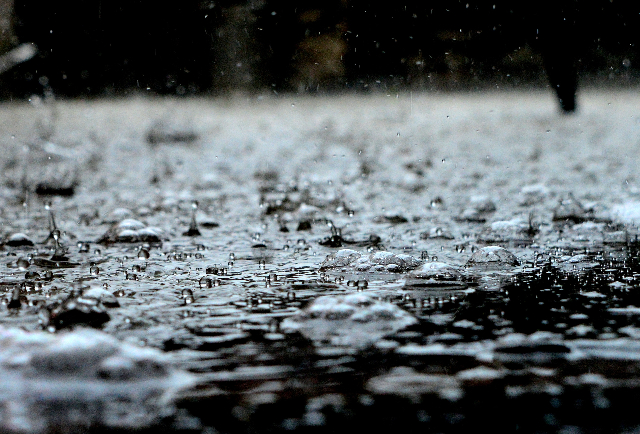As we come face-to-face with the realities of water scarcity and environmental concerns, sustainable methods are the focus of our crusade into finding solutions. One method that has been gaining traction across the country is rainwater harvesting. With a blend of modern technology, this antiquated method is an easy yet unmistakable eco-friendly solution. We’ll explore the numerous benefits of rainwater harvesting and how it plays a critical role in sustainability and water security.
What is Rainwater Harvesting?

Photo by Pixabay: https://www.pexels.com/photo/rain-drops-459451/
Rainwater harvesting is an eco-friendly way to collect and store rainwater for a variety of purposes. By collecting rainwater from surfaces like roofs, driveways, and parking lots, you can use it indoors, manage stormwater, and irrigate your landscape. It’s a feasible solution, especially when the water supply is insufficient or of low quality.
Types of Rainwater Harvesting Systems
Collecting rainwater involves a range of techniques and is versatile with several different types of systems that cater to different needs. We’ll explore the types of rainwater harvesting systems, pinpointing their features, benefits, and suitability.
Direct Pumped
Typically used for domestic purposes, these easy-to-install systems use underground tanks to store rainwater after it flows through a sophisticated filtration. With a combination of gravity and a pump, water gets into the tank and is then recirculated to your appliances through another pump.
Indirect Pumped
Indirect pumped harvesting systems are placed anywhere on your property. These systems ensure water is effectively distributed using a booster pump located inside the main tank. This innovative solution allows for efficient water management and utilization on your property.
Gravity Only
Gravity-only harvesting systems are highly efficient and budget-friendly. These systems rely solely on gravity to collect rainwater from drainpipes and your roof. The collected water can then be distributed to different parts of your home, as long as the tank is positioned above the appliances or garden that needs to be supplied. This innovative approach ensures a sustainable and convenient water supply for your household.
Indirect Gravity
Indirect gravity systems have storage tanks that are put in a high header tank that’s usually situated on or near the roof. The collected rainwater is directed to the tank through a pump with the option of solely using gravity.
Wet Systems
With wet systems, the piping is underground. As it rains, the water flows through the gutters and into the underground pipes. From there, it ascends into a tank or fills an underground tank. The pipes in wet systems are consistently comprised of water and do not dry in between rainfall.
Dry Systems
In dry systems, your property will have a sizeable tank connected to pipes running from the gutters. Whenever it rains, the tank is filled with water, while the pipes remain dry in between each rainfall.
Rain Barrels
Rain barrels are among the most popular and cost-saving harvesting systems available. Positioned conveniently underneath a downspout, they collect rainwater as it pours from a roof. With the capacity to sustain around 50 gallons of water, rain barrels are not only efficient but also super easy to install.
Benefits of Rainwater Harvesting
Rainwater harvesting offers numerous benefits that stretch beyond saving on your water bill. By collecting and using rainwater, not only do you contribute to saving our cherished resources but you also play a crucial role in improving the environment.
Savings on Water Bill
Harvesting rainwater can help you cut down on your water bill. Not only does it help cut costs for you, but it can significantly reduce costs for a plethora of people who live in a community that harvests rainwater. By having your own source of water, you’ll have a lessened need to rely on local city sources in the event the water becomes toxic.
Can Enhance Plant Growth
Using harvested rainwater can be extremely beneficial for your gardens and plants. Not only does it effectively wash out salt buildup, but it’s also immune from various contaminants, chlorination, and pollutants.
Has Environmental Benefits
When it comes to the benefits of rainwater harvesting, it can ultimately improve the environment. It’s a sustainable and easy way to safeguard the earth’s natural resources while keeping a lid on the harmful effects of stormwater runoff.
Preserves Groundwater
Groundwater sources are being depleted in several areas partly due to rising climate change. Because of this, a handful of farms, industrial sites, and communities are leaning toward groundwater extraction to meet the evergrowing needs. However, this method of water sourcing can prove to be detrimental. With rainwater collection, the harvested rainwater can be stored for later use, especially when there’s a drought.
RELATED: Water-Saving Trends
Is Rainwater Harvesting Right for You?
The benefits of rainwater harvesting are plentiful. Not only does it boost water conservation, but it also provides a viable solution to water shortages, especially in dry areas. The environmental advantages are substantial in diminishing the impact on local bodies of water by reducing runoff.
If you would like to learn more about rainwater harvesting in the Detroit area, contact the experts at Premier Plumbing.
Metro-Detroit Plumbing Problems Hotline:
Location: White Lake, Michigan
Phone: (248) 363-5864
Location: Hartland, Michigan
Phone: (810) 632-7420
Location: Fowlerville, Michigan
Phone: (517) 223-4360
Email: [email protected]
Request a FREE repair quote with Premier Plumbing, Inc. online at premierplumbing-mi.com/get-a-plumbing-quote/

